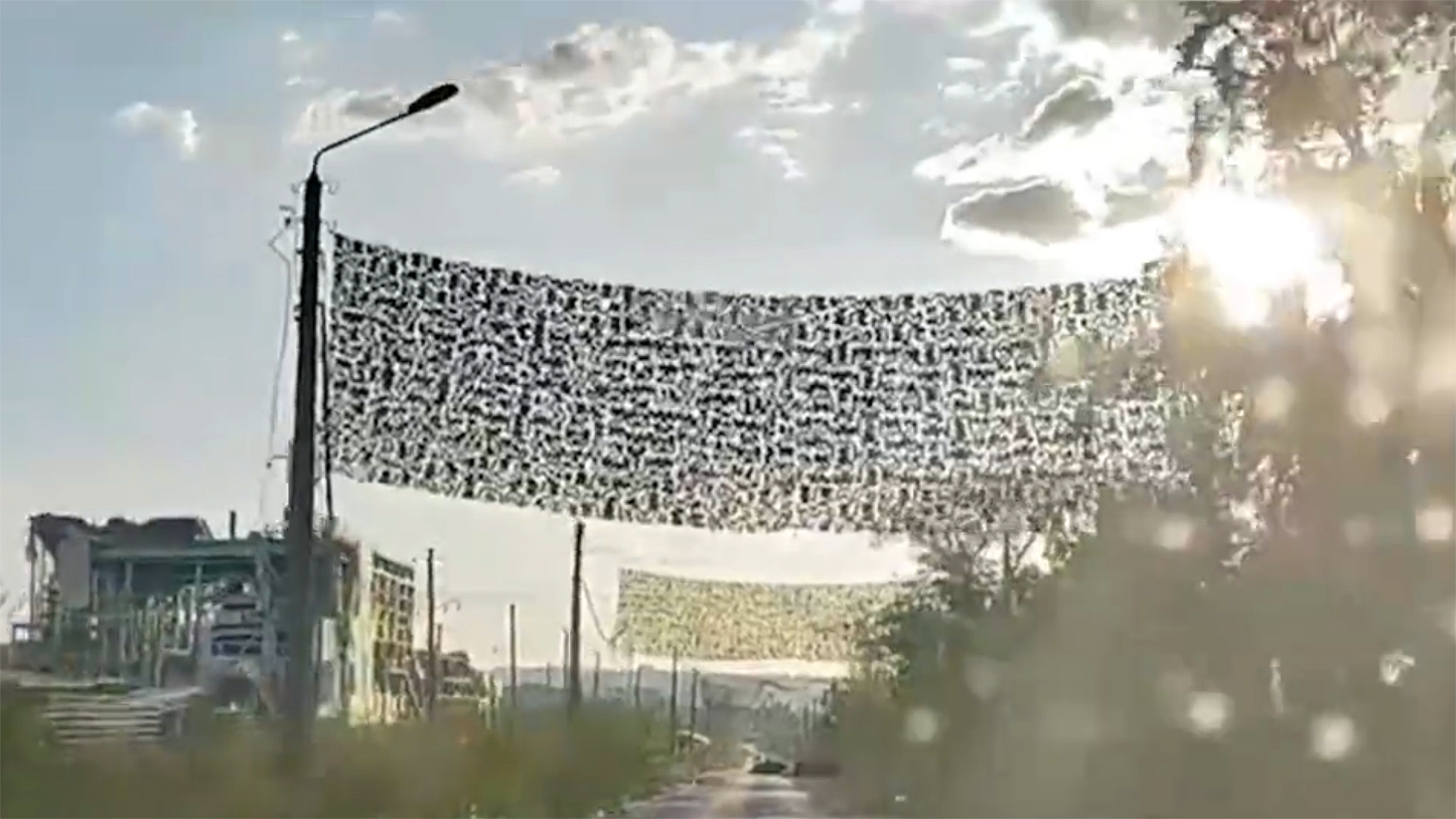First Person View (FPV) drones have become a signature weapon of the conflict in Ukraine, and a wild video posted by the Ukrainian Ministry of Defense today shows just how maneuverable these drones can be — and how hard they are to stop — while another shows the desperate measures being taken to counter them.
In the example below, we see a Ukrainian FPV ‘suicide drone’ fly through a forest, weaving between trees before entering a Russian dugout, where its warhead presumably detonates. Flying considerably higher, another drone then shows the apparent aftermath of what looks like a successful attack.
FPV drones, descended from racing drones, are commanded by an operator wearing a headset who can fly the weapon into a particular target. So far, we’ve seen these drones hit tanks, trucks, troops in trenches, and, as seen in the video below, even other drones.
FPV drones “are a competitive advantage on the battlefield,” Ukraine’s Ministry of Digital Transformation said, back in May this year. “They catch up and destroy almost any target. And most importantly, they save the lives of our soldiers, who see every step of the Russians while in hiding.”
As well as Ukraine’s “Drone Army FPV Super Bowl,” designed to help spur domestic development of these weapons, Russia has launched its own crowdfunding campaign for FPV drones, which, as you can see in this video below, it is using to deadly effect as well.
Like many technological aspects of this conflict, FPV drones find themselves at the center of an ongoing cat-and-mouse game between weapons development and countermeasures in Ukraine.
This is well illustrated by another video, this time from the Russian side, showing one such effort to protect against FPV drones. The video shows how Russian forces erected camouflage nets on light poles over roadways near war-torn Bakhmut to stop or otherwise deter Ukrainian FPV drones attempting to strike its vehicles on the roadway.
The countermeasure, according to the TF Suricats Telegram channel, exploits the fact that FPV drones often follow vehicles on roadways, so placing the nets here can stop the drones before they hit anything. At least two Ukrainian FPV drones have been stopped in this way, according to the same Telegram channel. In reality, this is most applicable to their high-speed terminal attack runs where they can end up chasing down vehicles at shallow approach angles under some circumstances.
Not long after this video was posted, however, at least one Ukrainian drone operator figured out a simple workaround. As you can see, the Ukrainian FPV drone simply flies over the netting and into a nearby tank. While it’s possible the netting in the video may have been geolocated in advance, the barrier would likely also be fairly obvious to the operator.
And so the cat-and-mouse game continues. The TF Suricats channel suggests using fishing line instead of netting. Since this is far less visible to cameras, it should also be harder for the drone operators to evade. Also, with its reduced wind load, the Russians could build larger barriers.
As the head of Ukraine’s Defense Intelligence Directorate, Lt. Gen. Kyrylo Budanov, told us last week, the ubiquity of FPV drones on the battlefield is a huge factor adding to the challenges of mounting armor operations by both sides.
“…a new feature that hasn’t been observed anywhere before is the high number of FPV suicide drones on both sides which are able to engage practically any piece of equipment,” Budanov told us. You can read more from our exclusive interview with the Ukrainian spymaster here.
Whether these anti-drone nets are an effective deterrent remains to be seen, although the evidence of at least one Ukrainian FPV drone defeating this measure indicates that they are a hindrance at best. On the other hand, it’s clear that FPV drones present a troubling menace for both sides and there will doubtless be further countermeasures developed to defeat them.
Contact the author: howard@thewarzone.com
